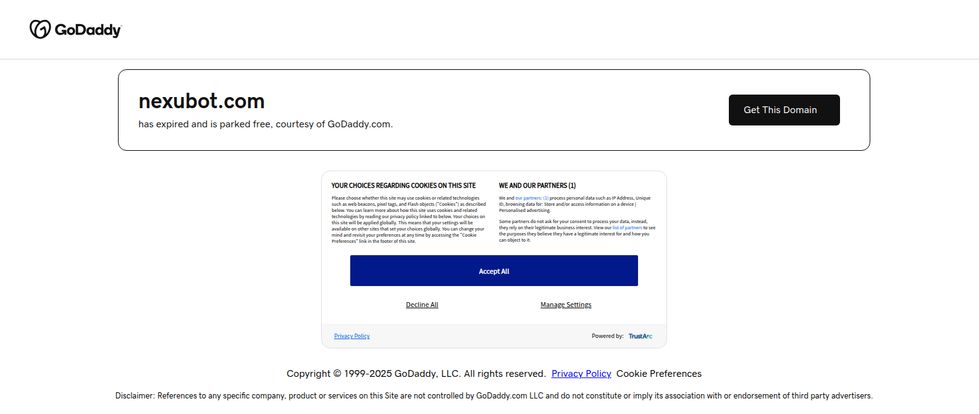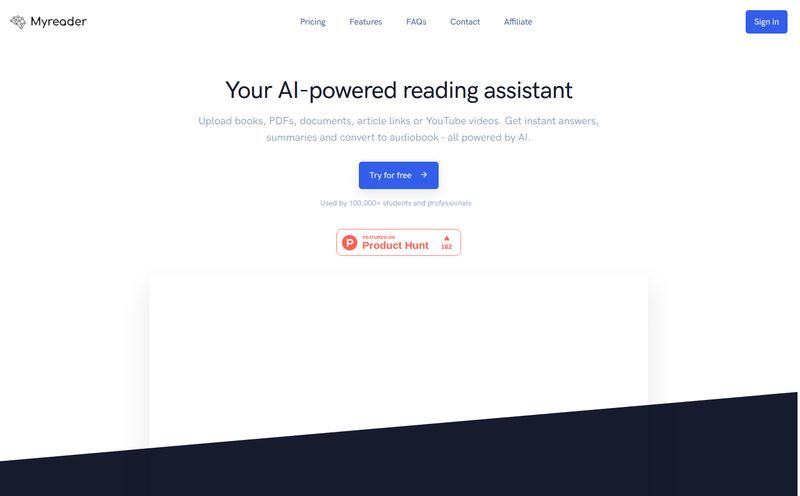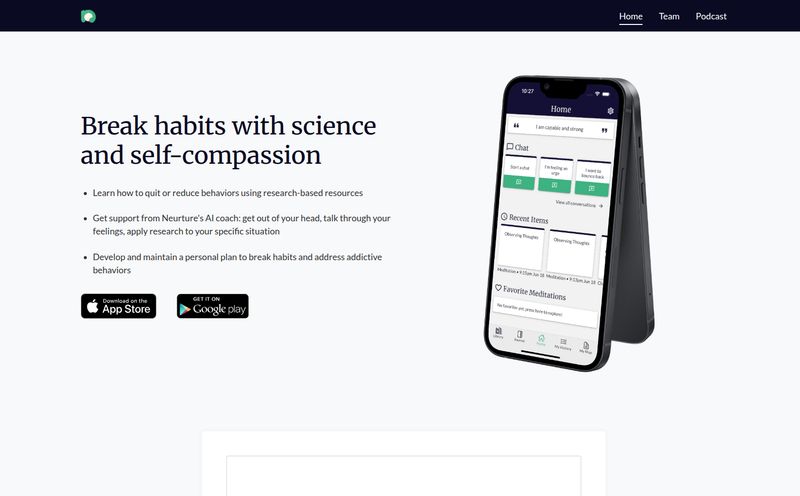I’ve been in the SEO and traffic generation game for a long time. You see tools come and go. Some are brilliant flashes in the pan, others become industry mainstays. Every so often, though, you stumble across something that makes you lean in a little closer to your screen. A tool that promises the world for the price of a decent lunch. That was my first impression of NexuBot.
The chatter was about a no-code platform that could hook up OpenAI's powerful assistants directly to your website, your socials, your customer support channels… basically, turning every digital touchpoint into an intelligent, 24/7 conversation machine. For someone who lives and breathes user engagement and lead conversion, this is the holy grail. The idea of deploying sophisticated AI without begging for favors from the dev team? Sign me up.
So, What Was the Big Deal with NexuBot?
On paper, NexuBot was a dream for small businesses, solo entrepreneurs, and marketers like us. It positioned itself as the bridge between the high-tech world of OpenAI's APIs and the everyday business owner who just wants things to work. The core promise was beautifully simple: build and embed powerful AI chatbots without writing a single line of code.
This wasn’t just about putting a simple “Hi, how can I help you?” widget on your site. This was about leveraging OpenAI's more advanced assistant capabilities. Imagine a bot that could not only answer questions but could also access documents you provide, remember past conversations, and handle complex customer queries. It was designed to be your best employee, one that never sleeps or asks for a coffee break. The potential for lead generation and offloading repetitive customer support tasks was enormous. It sounded like the kind of disruptive tech that keeps CEOs at the big, clunky enterprise software companies up at night.
The Pricing Model That Made Everyone Stop and Stare
Okay, this is the part that really got my attention. In a world completely dominated by the Monthly Recurring Revenue (MRR) model, NexuBot came out swinging with a one-time payment structure. Let me repeat that: a one-time payment. It's a siren song for any business owner tired of subscription fatigue.
The pricing tiers were, frankly, nuts. In a good way. Or so it seemed.
| Price (One-Time) | What You Got |
|---|---|
| $49 | 1 Chatbot, unlimited leads and conversations, no expiration. |
| $69 | Unlimited chatbots, unlimited leads and conversations, unlimited chat history, multiple integrations, no expiration. |
For $69—less than what many competitors charge for a single month—you could have unlimited chatbots forever. It was the kind of deal that makes you double-check if you read it correctly. Unlimited. It’s a powerful word in marketing. This pricing alone was enough to generate significant buzz and, I suspect, a whole lot of early adopters.
And Then… The Mystery. Where Did NexuBot Go?
So, naturally, after seeing all this promise, I thought, “I have to see this thing in action.” I typed `nexubot.com` into my browser, eagerly anticipating a slick landing page and maybe a live demo.
Instead, I was greeted by this:

Visit NexuBot
A GoDaddy parking page. “nexubot.com has expired.”
Poof. Gone. Vanished into the digital ether. The website, the pricing page, the login portal… all of it, replaced by the internet’s equivalent of a “Sorry, we’re closed” sign nailed to a boarded-up storefront. It's not a 404 error or a server-down message. This is a sign that whoever owned the domain simply… stopped paying for it.
A Cautionary Tale from the Digital Graveyard
The story of NexuBot, whether it's a temporary blip or a permanent dirt nap, is a powerful lesson for anyone in the tech space. It highlights a few realities we need to talk about more often.
The Seductive Danger of Lifetime Deals (LTDs)
I love a good LTD as much as the next guy. But an offer like NexuBot’s sets off alarm bells for anyone who understands business models. A one-time payment for an “unlimited” service that relies on a paid API (like OpenAI's) is a tough equation to balance. The business needs a massive influx of new customers constantly just to cover the operational costs of its existing users. Often, it's a strategy to get quick cash flow, but it's not always sustainable. Sometimes it works, but other times, well, you end up with an expired domain.
The Importance of Due Diligence
Before you jump on the next amazing LTD, do a little digging. Who are the founders? Do they have a public presence on LinkedIn or X (formerly Twitter)? Is the company registered? Is there an active community or social media channel? A lack of transparency can be a red flag. In the case of NexuBot, the sudden disappearance suggests a very small operation that couldn't weather a storm, or worse.
Building Your House on Someone Else's Land
One of the cons listed for NexuBot was its total reliance on OpenAI. This is common for thousands of new AI tools, which are essentially “wrappers” around a foundational model. It means your entire business is subject to the whims, pricing changes, and API updates of another company. It's a risky place to be, and it adds another layer of fragility to a new startup.
So, Was It All Just a Dream?
What happened here? Was it a simple business failure? Did the founders run out of money to pay the GoDaddy bill? Or was it something more cynical? We may never know. The digital world is full of these ghost ships—products and companies that burn brightly for a moment and then vanish, leaving behind a few blog posts and a lot of confused customers.
The rise and fall (or at least, disappearance) of NexuBot is a classic story from the AI gold rush. The technology is moving so fast that services are being built and abandoned at a blistering pace. It's exciting, but it's also a bit of a wild west. You have to be careful where you stake your claim.
Frequently Asked Questions (FAQ)
- What was NexuBot?
- NexuBot was a planned Software-as-a-Service (SaaS) platform that allowed users to create AI-powered chatbots using OpenAI's technology without needing any coding skills. The goal was to easily integrate these bots into websites, social media, and other digital channels.
- What was NexuBot's pricing?
- NexuBot offered a very aggressive one-time payment model. It was $49 for a single chatbot and $69 for unlimited chatbots, both pitched as lifetime deals with no recurring fees.
- Why can't I access the NexuBot website?
- As of this writing, the domain name `nexubot.com` has expired and is parked by GoDaddy. This means the platform is currently inaccessible and likely no longer operational.
- What happens to customers who paid for NexuBot?
- This is the big, unfortunate question. If a company dissolves without a formal process, customers who paid for a lifetime deal may have little recourse. Their 'lifetime' access lasts only as long as the company does. It's a risk inherent in the LTD model.
- Is a one-time payment for software always a red flag?
- Not always, but it deserves extra scrutiny. It can be a great deal if the company is well-established or the software doesn't have high ongoing server costs. However, for a service that relies on another company's paid API, a one-time fee for unlimited use is a business model that's very difficult to sustain long-term.
- What are some stable alternatives to NexuBot?
- There are many reputable no-code and low-code chatbot builders on the market that operate on more traditional, sustainable subscription models. Some popular names include Chatbase, Voiceflow, and Botpress. They might not offer a $69 lifetime deal, but they are established businesses with a much lower risk of disappearing overnight.
Final Thoughts
The story of NexuBot is a fascinating and sobering snapshot of the current AI landscape. It represents the incredible promise of democratized AI and the simultaneous peril of unsustainable business models in a hyper-competitive market. We all want the magic bullet, the one-time purchase that solves all our problems. But as the ghost of NexuBot shows us, if a deal looks too good to be true, it just might be. So, stay curious, stay excited about the technology, but always, always keep a healthy dose of skepticism in your back pocket. And maybe check if the company has paid its domain registration bill before you enter your credit card details.
Reference and Sources
NexuBot Official Website (Archived/Expired):
http://www.nexubot.comGoDaddy Domain Parking Information: What is a Parked Domain?
OpenAI Assistants API: Assistants Overview
Understanding SaaS Business Models: What Is The SaaS Business Model? – Forbes Advisor



